When the global pandemic brought workplaces to a halt, many organizations acknowledged an increased need for organizational resilience, with McKinsey Consulting claiming that organizations need to radically rethink their workforce planning.
That’s where succession planning comes in. But what is succession planning? How can we successfully implement it to build talent pipelines and ensure leadership continuity?
In this guide, we’ll define succession planning and outline the steps involved in creating a successful succession plan, including how to implement and maintain your plan by tracking progress, monitoring potential candidates, and adjusting as needed.
What is succession planning?
Succession planning is the process of identifying and developing internal staff to fill key positions in a company, ensuring a smooth transition of leadership when new resource requirements arise. It involves evaluating the skills and abilities of current employees and preparing them to take on future roles, filling key positions with qualified candidates who are already familiar with the company's culture, values, and goals.
Successful succession plans develop and maintain a pipeline of internal talent, reducing the need for external recruitment, and reducing the costs associated with external recruitment such as advertising, interviewing, and training.
Why does a business need to plan for succession?
Succession planning is critical for organizations to prepare for future leadership needs and ensure a smooth transition of leadership when necessary. Succession planning reduces the risk of losing critical knowledge and expertise when key employees leave the company. It also helps to develop and retain internal talent, which can lead to higher employee engagement and job satisfaction.
By developing a pool of potential leaders, organizations ensure that they have the right people in the right positions at the right time, reducing the risk of disruption in operations.
Succession planners should also consider the business’s diversity and equality goals. Succession plans are an excellent way to build a diverse and inclusive leadership team that represents the company's values, mission, and culture.
What are the key benefits of succession planning?
Key benefits of succession planning include:
Organizational resilience through future-proofing
Any top talent can be lured away to another company but resilient organizations will have a plan in place to ensure there are other candidates who can take on vacated roles. Succession planning supports this and future-proofs the business by having specifically identified and trained internal candidates ready to take on these positions.
Structured development
By finding potential successors ahead of time, businesses have time to develop a training and development program to ensure that employees moving up have the skills required to take on certain roles. Seeing others develop and advance through the company also motivates other employees to work hard, as they’ll want the opportunity to develop too.
Preservation of brand identity
By creating internal talent pipelines, you get people from within your business moving up and maintaining the brand identity, the company culture, and its core values. This ensures that the organization's culture remains consistent, even when leadership changes.
Cost efficacy
Succession planning cuts recruitment and onboarding costs. By promoting internally, there is less need for onboarding, and the high costs of recruitment are reduced. Succession planning increases engagement too - employees who know there are opportunities awaiting are more engaged and ambitious.
What are the four stages of succession planning?
We’ve identified four stages of effective succession planning. These are:
1. Committing to succession planning
The initial stage of succession planning involves making a commitment to the process. As part of this commitment, we need to establish a team to oversee the succession planning process.
To gain this commitment, it’s important to communicate the need for and benefits of succession planning to relevant stakeholders such as senior management, HR, and employees. Effective communication will manage expectations and address any concerns or misconceptions about the process.
2. Selection of key positions and high potential employees
The second phase of succession planning involves identifying key positions within the organization, assessing the current talent pool, evaluating potential successors, and creating a development and training plan to prepare them for leadership roles. The selection process may involve determining the required competencies and behaviours for each key position and identifying high-potential employees who could potentially fill key positions in the future. Once potential successors have been identified, the next step is to evaluate their readiness and potential to take on key leadership roles.
It’s important to consider factors such as motivation, engagement, and fit with the organization's culture and values. The assessment process should be based on objective criteria and conducted in a fair and consistent manner to ensure that all potential successors have an equal opportunity to be evaluated.
3. Developing high potential successors
Once potential successors have been identified, the next step is to create a personal development plan for each individual to ensure they have the necessary skills, knowledge, and experience to succeed in future leadership roles. Creating development plans involves assessing current skills and experience and identifying the training and development opportunities required to prepare them for future leadership roles. This may look like formal training, such as courses or workshops, or on-the-job training such as mentoring or coaching.
Creating opportunities for successors to gain experience through job shadowing or stretch assignments is another effective way to develop their skills and build their confidence. This approach also exposes them to different parts of the business and helps them develop a broader understanding of the organization's operations which will be vital in their future role.
4. Transitioning successors into leadership positions
Once a successor has been identified and developed, it’s important to carefully manage the transition process to ensure a smooth handover of responsibilities.
This involves providing ongoing support and training to the new leader to ensure they have the necessary skills, knowledge, and support to succeed in their new role. This support may include coaching, mentoring, and providing access to resources and tools to help them succeed. It’s also important to establish clear expectations and goals for the new leader to help them navigate their new role effectively.
How to develop a succession planning process
Given the average tenure of a C-suite leader ranges from 3-8 years, effective succession planning can be the difference between continued success or potential failure.
Below are the key steps for developing a succession planning process:
Identify future needs
It’s crucial to assess the company's long-term goals and objectives to understand the direction in which the organization is moving. By identifying the business’ needs, organizations can develop a succession plan that aligns with their goals, helps to identify future leaders, and ensures the continuity of the business.
Identify key positions, competencies and behaviours
It’s also essential to identify the roles within the organization that are critical to its success. These may include roles that are responsible for driving revenue, managing key projects, or leading teams.
Once these roles have been identified, it’s important to define the competencies and behaviours required for each role including technical skills, leadership abilities, communication skills, and emotional intelligence. Psychometric assessments can help identify high-potential employees who have the necessary competencies and behaviours to succeed in key roles, as well as any areas where additional development or training may be required.
Assess for high potential and performance
Selecting high-potential employees is a critical step in developing a succession plan.
To effectively evaluate employee potential and performance, organizations can use a combination of assessments. Aptitude tests evaluate an employee's cognitive abilities and potential to learn and adapt to new tasks and situations in a specific field. Behavioural tools, such as personality tests and situational judgement tests, can provide valuable insights into an employee's behavioural tendencies, work style, and communication skills. Additionally, personality assessments can help to identify employees who have the personality traits necessary for success in a particular role.
A combination of these assessments alongside organizational performance data can help evaluate employee potential and performance, identify high-potential employees, and develop a pipeline of future leaders.
Invite high-potential employees to participate
The identified employees should be invited to participate in the succession planning process - their buy-in is necessary for success. It’s good to start with discussions about their career aspirations, their current skills and abilities, and any potential development opportunities to see that they align with the plan and the company’s goals.
Involving employees in the succession planning process gives them a clear understanding of the skills and competencies required for key roles and supports their career development. These discussions can also identify any potential gaps in skills or experience that may need to be addressed through training and development.
Select training and development activities
With their high-potential employees on board, organizations should consider a range of training and development options for their future leaders, such as:
1. Stretch projects
Stretch projects are typically more challenging and complex than an employee's regular job duties and require them to stretch beyond their comfort zone. By taking on these projects, employees are exposed to new skills, knowledge, and experiences that can help them to develop the competencies and behaviours required for leadership roles. Stretch projects also provide employees with opportunities to work with different teams, build their networks, and gain exposure to different areas of the organization.
2. Formal training
Formal training, such as leadership development programs, play a critical role in developing the skills necessary for leadership. These programs are designed to provide employees with the knowledge, skills, and tools required to lead teams and drive business success. By participating in formal training, employees develop a range of competencies, including communication skills, strategic thinking, problem-solving, and emotional intelligence. Leadership development programs also highlight different leadership styles, best practices, and real-world case studies and help employees build their confidence and awareness of their leadership style.
3. Executive coaching
Executive coaching is a personalized approach to leadership development that provides one-on-one support for individuals in leadership roles as leaders and future leaders work with a professional coach to identify their strengths, weaknesses, and areas for improvement.
Executive coaching can involve exploring leadership styles, communication skills, problem-solving abilities, and emotional intelligence. By working with an executive coach, leaders can receive personalised support and guidance on how to develop their specific skills, build their confidence, and overcome challenges. Executive coaching also provides leaders with opportunities to receive feedback, reflect on their experiences, and gain new insights into their leadership style.
4. Accelerated leadership programmes
Accelerated leadership programs, such as the leadership development programme at Danamon bank, are intensive training and development programs designed to prepare high-potential employees for leadership roles. These programs provide employees with opportunities to develop key competencies and behaviours required for leadership roles, such as strategic thinking, problem-solving, communication, and emotional intelligence.
Additionally, accelerated leadership programs often involve exposure to senior leaders, experiential learning, and networking opportunities. This can help employees to build their confidence, build their networks, and grow assertiveness as more senior employees grow familiar.
Monitor and evaluate
Monitoring and evaluating the effectiveness of the succession planning process is the only way to see if the plan is meeting its objectives and that it’s delivering a strong ROI.
The evaluation and review of your process can be managed through panel reviews or assessment centres, as well as feedback from candidates.
What tools can help with succession planning?
Like all effective leadership strategies, succession planning involves a few tried and tested tools. Here are a few tools available to help you succeed in developing internal talent pipelines:
Technical assessments
Technical assessments are evaluations that measure an employee's knowledge, skills, and abilities in a specific area or field. They are a critical component of a succession planning process as they assist in identifying potential successors for key roles and provide valuable insight into an employee's strengths and weaknesses, helping to identify areas where training or development may be necessary.
Aptitude tests
An aptitude test is a tool used to evaluate a candidate's potential to perform in a particular role. These tests measure cognitive abilities such as numerical, verbal, logical, and spatial reasoning. They are designed to assess the candidate's potential to learn and adapt to new tasks and situations in a specific field. The results of aptitude tests can be used to determine the candidate's strengths and weaknesses and identify areas where further training or development may be necessary.
Behavioural tools
Behavioral assessments evaluate a candidate's behaviour and personality traits. They are used to assess qualities such as emotional intelligence, work style, and communication skills. These assessments are made up of personality tests, situational judgment tests, and simulations. The results of these assessments provide insight into how a candidate is likely to behave in certain situations, how they work with others, and their potential for success in a particular role.
Personality assessments
Personality assessments evaluate personality traits, values, and interests. These assessments are designed to identify the candidate's behavioural tendencies and may be used to predict their fit for a particular job and potential for success in that role. They’re a valuable tool in the hiring process, helping employers identify candidates who are the best fit for a particular role and the company culture.
360-degree feedback
360-degree feedback evaluates an employee's performance and potential by gathering feedback from a range of sources including their peers, subordinates, and superiors. This method provides a well-rounded view of an employee's performance and potential, helping identify areas for development and growth.
Internal staff development vs external recruitment
Some might ask: Why develop internal talent pipelines and plan for succession when you could recruit externally?
Let’s take a look at how internal staff development and external recruitment measure up against one another when it comes to creating a strong workforce.
Finding the ‘right fit’
Internal staff development can result in employees who are loyal to the company and have a deep understanding of its culture whereas external recruitment involves attracting candidates from outside the organisation who possess complementary skills, experience, and personality traits that align with the company culture. The ‘right fit’ could come from either source. On balance combining both approaches as many organizations do can lead to a well-rounded and diverse workforce whose skills and personal motivation are strongly aligned with the objectives of the organization.
It takes time to train the right people...
Training the right successors for key roles is a time-consuming process. According to a study by the Centre for American Progress (CAP), the average cost to a business in the time between a mission-critical employee leaving, such as a top executive, and their successor reaching peak effectiveness in their new role can be up to 213% of their annual salary.
The time it takes an employee to reach optimal productivity will depend on the speed with which they learn new information, their professional background, and the sector they’ve come from. It’s essential to invest in the recruitment and training of new and existing employees to ensure they have the necessary skills and knowledge to perform their roles successfully. This will minimise the disruption caused by the departure of key employees and ensure a smooth transition for the organisation.
...And the same goes for training internal talent
Upskilling internal talent is a crucial component of any succession plan but preparing internal talent for business-critical positions can be expensive and time-consuming. Whether you choose to send employees on courses or hire an internal trainer, you’ll likely incur significant costs - that said, employees who’ve been trained in-house are more likely to have a deep understanding of company culture and values.
Developing internal talent within a succession plan is a valuable investment for any organization but it’s crucial to consider the cost implications and ROI of any upskilling program. By investing in internal talent, however, businesses ensure they have a deep bench of skilled employees ready to step into critical roles, improving their organizational resilience and longevity.
Talent management programs drive business value
One key benefit of effective talent management is that it can help to drive business value. By having a skilled and engaged workforce, organizations can increase productivity, reduce costs, and improve innovation. Additionally, effective talent management can help to reduce employee turnover, which can be expensive in terms of recruitment and training costs.
By focusing on attracting, developing, and retaining the best talent, organizations can create a competitive advantage and achieve long-term sustainability.
Employee engagement matters
Employee engagement is a top priority for both HR leaders and senior executives, with a Gallup study finding that for every engaged employee, there are two disengaged employees. Employee engagement is a crucial factor in retaining high-potential employees as it impacts productivity, profitability, and overall success.
To retain high-potential employees who may be key to succession planning, organizations need to prioritize employee engagement. This can be achieved by taking a holistic approach to talent management but includes initiatives such as understanding what motivates their people, providing opportunities for professional development, offering competitive compensation packages, and creating a positive work environment.
There’s no ‘right way’ to approach succession planning
Succession planning is a critical activity for any organization, but there’s no one-size-fits-all approach. The approach that works for one organization may not be the best fit for another. Recruitment and succession planning should be tailored to meet the specific needs of the organization, taking into account factors such as the company culture, industry, and future goals.
When to develop and recruit internally versus when to recruit externally
Even with a solid succession plan in place, we need to consider whether to recruit internally or externally for each vacancy that appears. We must consider whether we’ve got someone fully developed and ready to go into the empty position or whether it would be better in the long term to look externally.
When to recruit internally:
- Promising employees already exist within the company who could do the job
- Plenty of notice has been given by the outgoing employee
- Your company is thriving, and you have the capacity for people to move roles
- You have an abundance of skills and experience among your workforce
- Minimal onboarding and training is required for the role transition
When to recruit externally
- You already have a great candidate in mind who can fill the role quickly
- You have a tight deadline to fill the position
- When the stability of the internal structure is delicate and shifting employees may cause trouble
- There isn’t a strong succession plan in place yet, and time constraints make it difficult to create one quickly
- The required skills and experience aren’t available
- You want a fresh perspective in the role
- You have an effective training plan in place to onboard the new hire
Succession planning in summary
Succession planning is vital to business success. It recognizes the value of key roles within the business functions, the importance of knowledge and skills within your talent pool, and prepares you for the inevitable departure of staff to ensure the resilience, brand integrity and sustainability of your business in the long term.
Succession plans reduce recruitment and onboarding costs and protect your business by ensuring there are an abundance of resources for filling crucial leadership and management roles within your company. It also helps motivate existing employees and promotes a culture of continuous development and excellence.
The absence of succession planning can decrease business efficacy and damage your organization’s ability to achieve its objectives. It can leave gaps in knowledge, expertise and talent that detract from the value an organization offers its stakeholders and customers.
Take a proactive approach to succession planning and your business stands to gain a real advantage. At Thomas, we use scientifically proven processes to help organizations tackle the challenges of succession planning.
To see how we can help you be prepared for key people leaving or if you have any questions that aren’t covered here, get in touch with one of our experts.




